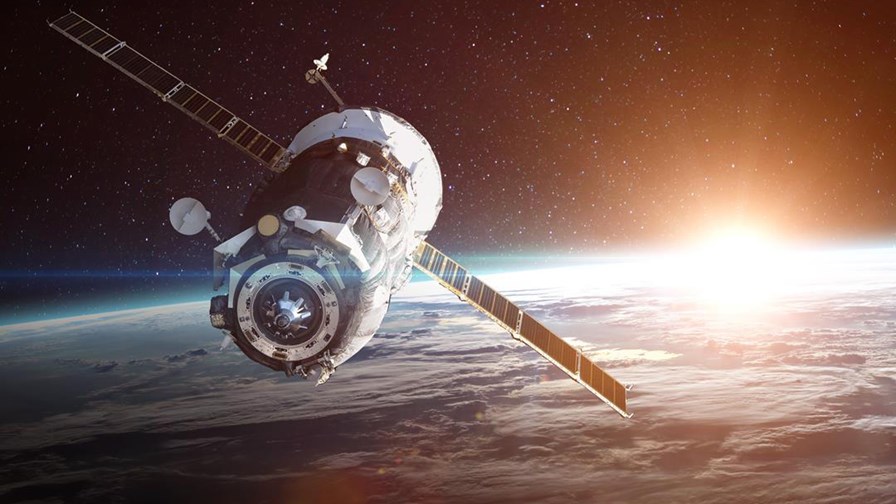
- Blanket broadband coverage for the entire Arctic Circle
- New OneWeb satellite system starts service next year
- High-speed, low latency access for homes, businesses, shipping, aviation, primary industries education and healthcare
- The first satellite is Nunuq-Sat - that's 'Polar Bear' in the Inuktitut language
What with global warming, the retreat of sea ice, disappearing glaciers and Donald Trump's deranged quest to buy Greenland, outright, for chump change, the Arctic is a hot topic right now. That's why it is gratifying to be able to report on some potentially good news for 'up North'. A company called OneWeb has announced that it will introduce "fibre-like" Internet access to the Arctic region next year. The company says it's OneWeb "fibre-like" Internet "will be the only solution whereby the Arctic’s under-served, and unconnected communities can benefit from broadband connectivity."
Sounds interesting, doesn't it? So let's take a closer look. OneWeb is building a satellite system that, in a previous iteration was called the WorldVu. OneWeb is yet another low earth orbit (LEO) satellite system (and how many of those have we seen come and go or crash and burn over the past 25 years?) "initially" comprising of an initial constellation of a mere 650 satellites that will fly at an altitude of 1,200 kilometres (750 miles) transmitting and receiving in the Ku band.
The satellite are being built by OneWeb Satellites which is a joint venture between Airbus and OneWeb, and the company's goal is to "connect everyone, everywhere". The new Arctic high-speed, low-latency internet service will deliver 375 Gbps of capacity above the 60th parallel North. Services are slated to start in 2020 and OneWeb claims there will be sufficient capacity to provide "fibre-like" connectivity to hundreds of thousands of homes, planes, and boats, and so connect millions of people and businesses across the Arctic area.
OneWeb is planned eventually to be a global network comprising an astonishing 1,942 satellites. However its its Arctic service will be an early and more modest deployment of just six satellites (which are already in low earth orbit, having been launched in February this year) and the company promises that "substantial services" will be introduced by the end of next year and full 24-hour coverage will be provided by early 2021, supplying unprecedented blanket coverage to every part of the Arctic Circle.
In a press release OneWeb says that its satellites will provide "dense and flexible high-speed, low-latency broadband services to the 48 per cent of the Arctic region that is currently without fast Internet access." The company also tested and proved the infant system’s capabilities by streaming HD video that achieved latencies of under 40 milliseconds.
Connectivity is an essential utility - everywhere
Lofting some 2,000 satellites into orbit is an ambitious goal, to say the least of it, and involves the manufacturing of high-volume, low-cost birds. OneWeb's satellites weigh about 125kg, are about the size of a household fridge and will be placed into Low Earth Orbit in batches of 36 at a time by Russian Soyuz rockets operated by Arianespace. It will take a sequence of 21 perfect Soyuz launches to boost the first 650 satellites into orbit on time and to budget.
OneWeb's CEO, Adrian Steckel, said, “Connectivity is now an essential utility and a basic human right. Our constellation will offer universal high-speed Arctic coverage sooner than any other proposed system meeting the need for widespread connectivity across the Arctic.”
OneWeb is already in situ in Norway and Alaska and its ground antennas will be fully operational by January 2020 (i.e within four months so the network is no just another 'pie in the sky' proposal that goes nowhere) and one of the company's first operational satellites in orbit has been given the name Nanuq-Sat (after the Inuktitut word for polar bear) by schoolchildren in Anchorage, Alaska.
One of Alaska's two US Senator's, Republican Lisa Murkowski, commented, “Connectivity is critical in our modern economy. As the Arctic opens, ensuring the people of the Arctic have access to affordable and reliable broadband will make development safer, more sustainable and create new opportunities for the next generation leading in this dynamic region of the globe.”
And that's the point, of course. The Arctic is incredibly rich in unexploited oil and mineral reserves (hence Donald's Trump's rapacious interest in Greenland) and is a growing economic hub in its own right for an increasing number of important industries. As OneWeb points out, its network will facilitate smart shipping, connected aviation, the collection of climate data, and the growth of a digital economy across the region. It will also further advance the Arctic’s growth as a key commercial trade region by greatly improving the region’s safety and communications services, as well as boosting education, healthcare and economic development in remote communities.
That, at least is the hope and the plan. And while the entire global OneWeb system will not be in place until 2027 at the earliest, for once, the Arctic will benefit first and if ever an area needed good, robust, reliable and inexpensive broadband access it is the rapidly warming and changing areas above the 60th Parallel.
Email Newsletters
Sign up to receive TelecomTV's top news and videos, plus exclusive subscriber-only content direct to your inbox.




